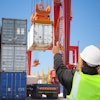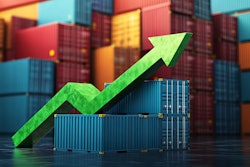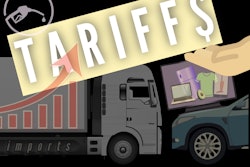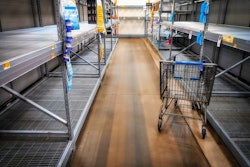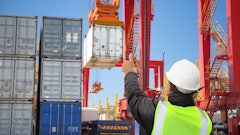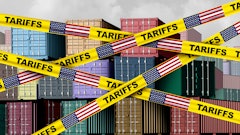
Supply chains are experiencing a new level of cost pressure amid global trade wars. Between uncertainty from shifting tariff deadlines and fluctuating prices on imported products, components, and materials, businesses of all sizes are navigating an extraordinary level of uncertainty in planning for their long-term future. As of Aug. 1, tariffs on the vast majority of goods the U.S. imports have risen, with 26 countries subjected to U.S. tariffs greater than 15%.
Despite the prevailing tariff narrative of panic and chaos, the reality is, its short-term economic impact is largely overblown—at least for larger enterprises. Unlike the last major global disruption at this scale, enterprises have had months to prepare. The pandemic forced such fundamental changes that most global enterprises aren’t viewing this as a moment for panic, but as a test for a new, more resilient operational posture.
The myth of the “last-minute scramble”
This is not a sudden supply chain shock. In fact, these tariffs been been anticipated for months. Large companies are deploying multi-pronged strategies that involve a mix of strategic waiting and proactive supply chain re-engineering, as well as the use of AI technologies to identify qualified alternative sources within their own existing supply base.
Many companies are front-loading inventory by stockpiling goods before tariffs take effect to avoid higher costs. This tactic creates a buffer, resulting in short-term inventory gluts on the tariff-free side of the supply chain. Vendor-managed inventory (VMI) is also being leveraged, where supplier-owned stock is placed close to the point of use, improving flexibility and reducing tariff exposure. This proximity shields parts from import tariffs while ensuring rapid production support (and keeping the inventory off the customers’ books).
The post-COVID paradigm shift: From “just-in-time” to “just-in-case”
In today’s tariff era, we are seeing a completely different global supply chain—one that’s structurally more resilient and robust. They have shifted away from highly efficient yet rigid, just-in-time (JIT) models to prioritize holding significantly more safety stock to guard against disruptions. This paradigm shift in supply management now prioritizes stability and agility over hyper-efficiency.
During the pandemic, record-high consumer demand chased a limited supply of goods, causing massive inflation. Supply chains buckled amid this demand, resulting in severe product shortages. That’s not the case now. Today, the landscape has completely shifted. Demand is softening a bit due to other economic macros, but inventory levels remain strategically high to cushion against future shocks. Businesses are proactively safeguarding their supply chains, rather than reacting to a crisis quickly.
The financial hurdles ahead and a focus on margins and P&L impact
The real tariff problem that lies ahead for large enterprise supply chains is its impact on profit margins, not the ability to operate or assure continuity of supply. Some companies are already reporting a potential margin hit of up to 30%, which is a major blow in low-margin industries like automotive manufacturing. But it’s a financial variable to be managed, not a signal to shut down operations.
In response is a multi-pronged approach that includes turning many dials by a smaller increment —companies absorbing part of the cost increases, passing some on to customers, and communicating transparently with shareholders about rough quarters. This is a classic example of profit and loss management. The question will be whether this approach is long-term sustainable given corporate shareholder expectations around topline growth. And yet this is not a supply chain disruption per se. It’s clear the tariff situation is filled with extraordinary financial pressures to navigate, not operational ones to panic over.
As global trade discussions continue, businesses must prioritize building an anti-fragile supply chain to stay ahead, supply chains that become stronger in response to shocks by seeking ways to transform volatility into an opportunity for continuous cost improvement. The goal is not to predict every single political whim or shift, but to build a system that is not only inherently resilient to volatility, but is able to proactively find opportunities. Companies that thrive view tariffs not as a temporary crisis to be weathered, but a permanent feature of the global landscape. Adopting a supply chain infrastructure built on preparedness and strategic flexibility is no longer just a strategic advantage, but a necessity for long-term growth.


